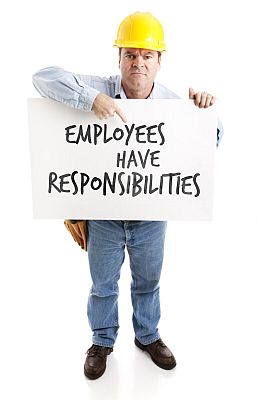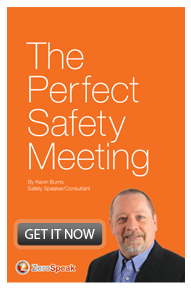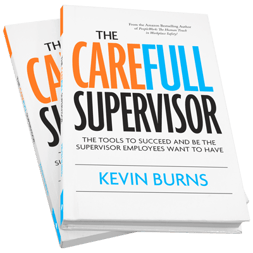Every employee has responsibilities in safety. The biggest of which is to ensure that you protect yourself.
 There is a lot of talk of safety leadership, complacency, accountability and responsibility on the job these days. At the same time, there is less discussion about compliance measures, rules, regulation, etc. And although there is still much work to be done in safety, we’re starting to change the conversation. Workplaces that are becoming more people-focused is good news.
There is a lot of talk of safety leadership, complacency, accountability and responsibility on the job these days. At the same time, there is less discussion about compliance measures, rules, regulation, etc. And although there is still much work to be done in safety, we’re starting to change the conversation. Workplaces that are becoming more people-focused is good news.
Asking our people to step up and play leadership roles in their own lives is empowering to the employee. It helps to underscore the importance of accountability and responsibility in safety.
Employee leadership raises personal standards and participation in the safety program. The leadership we are discussing here is an attitude; not the position or title sense of the word.
Old-style, top-down management is changing and instead, giving way to building more teams that utilize mentoring and coaching skills. Employee involvement is key to shifting the safety paradigm and to improving employee buy-in to safety. Part of that shift is a lot more discussion on responsibility and accountability.
Workplace polling puts the disengagement levels of employees at around 70%. Companies are attempting to overcome disengagement issues by utilizing a participatory approach in all things including safety. While engagement programs are helping to improve engagement numbers, it is also helping the overall safety effort.
The first place to go to work is basic supervisory skills training for supervisors. Companies are recognizing that in order to improve engagement efforts with employees, supervisors need skills to support those engagement efforts.
Once supervisors have developed some rudimentary skills in helping to support employees, then the focus moves to the employee. There are three key responsibilities that employees have in the job. As an employee, you must:
1Honor your agreements, obligations and responsibilities. Safety is not optional. It is an obligations in every workplace. It comes with the job. There are minimum expectations when it comes to safety that no employee, or supervisor, or senior manager can shirk: the requirement and obligation to work safely. I outlined this in my recent Blog post How Safety Leaders Define Accountability and Responsibility. Responsibility is the obligation to take action within the laws and expectations of the job; accountability is how well you will account for and defend your actions. People of integrity do what they say they will do, they accept their responsibilities without question and they act in accordance with the expectations placed upon them. When you take the job, you accept the obligations and responsibilities that come with it.
2Show up Fit For Duty. More than just a drugs and alcohol thing, ensure that you are rested, relaxed and ready (100%) to take on the tasks assigned to you. That means not overdoing it the night before and not being too tired. That means you will be free of drowsy cold medications, low blood sugar or not alert enough. Yours and others' safety depends on it. And if you know that you might not be 100%, tell someone. Do not try to hide. Be the person who was at the original interview when your employer asked, “why should we hire you?” You gave an answer that caused your employer to determine that you were the best choice out of all of the candidates. So be that person. You showed character in your interview. It impressed them enough to hire you. Showing up fit for duty demonstrates your integrity and communicates your level of caring and concern for your fellow employees.
3Be a leader. When you make the workplace safe for one other person, you make it safe for every other person; including yourself. A safe workplace is what you expect when you show up each day. But you have an equal responsibility to contribute to that safe workplace. If you have a co-worker not meeting their obligations, you must step up and be a leader. Leaders lead. That means they go first. When you see something that you know just isn’t right or if a co-worker is taking an unnecessary risk, do the right thing. Say something. Intervene. Speak up. And if you are uncomfortable having that conversation, a well-placed word to a supervisor or safety manager can also speed things along. The culture of “how we do things ‘round here” is powerful. Safety is too important to take lightly. Leaders make their workplaces better. Are you making it better for your co-workers?
 There is nothing in any of the three points above that is difficult, that would impede production or that would impact your co-workers in a negative way. You have some basic expectations about your workplace and how you would like to be treated. You want to be respected by your employer.
There is nothing in any of the three points above that is difficult, that would impede production or that would impact your co-workers in a negative way. You have some basic expectations about your workplace and how you would like to be treated. You want to be respected by your employer.
Every employee has responsibilities in safety. The biggest of which is to ensure that you protect yourself. Be a person of character. Be the person that others want to work with.
Kevin Burns collaborates with safety departments, safety committees, management and front-line supervisors to accelerate safety programs. Through consulting services to create a personalized plan to accelerate safety teamwork, or a safety meeting speaking presentation to rally your employees around safety, Kevin helps improve engagement and teamwork in safety.
Kevin Burns is a management consultant, speaker and author of “PeopleWork: The Human Touch in Workplace Safety.” He believes that the best place to work is always the safest place to work. www.KevBurns.com


